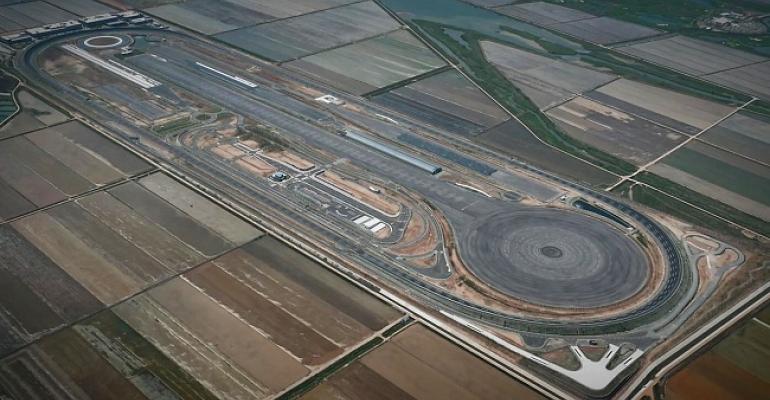Automotive supplier Hyundai Mobis opens its Seosan Proving Ground comprising 14 test tracks and four test buildings designed to develop core technologies of autonomous driving.
The Seosan Proving Ground was completed in late 2016 and this month opened on a 300 million won ($270 million) site in Korea’s South Chungcheong province, Hyundai Mobis says in a news release. The facility is designed to improve the performance and quality of all auto components produced by the captive supplier for automakers Hyundai, Kia and Genesis in cooperation with its five existing R&D centers.
The tracks provide multiple special surfaces, including an advanced track, radar track, tunnel track and a skid pad.
The advanced track features a mock city, soundproof tunnel, forest roads, bus stops and guardrails. This allows core technologies of autonomous vehicles to be tested in the same road environment as experienced by real drivers. The radar track is a space for testing the recognition performance of sensors including the cameras and radars that are core technologies for autonomous driving.
The tunnel track, measuring 33 ft. (30 m) wide and 275 ft. (250 m) long, provides a “blackout” environment for conducting vehicle testing for intelligent headlamps, advanced driver-assistance-system camera recognition and control tests, as well as country-specific lamp-compliance tests.
The skid pad replicates winter road environments such as rainy, snowy and icy surfaces and is used to test the steering, braking safety and vehicle-dynamic-control performance of vehicles on slippery surfaces. The skid pad also provides a variety of environments including turning and climbing environments, making winter testing possible in any of the four seasons.
The intelligent-transportation-system environment will be used for development of a vehicle-to-infrastructure-based autonomous-driving system in connection with communications technology.
The four test buildings, housing more than 380 types of advanced test equipment, are used to evaluate module and chassis-component performance and quality; evaluate the durability of steering and braking components and modules, and other components; test the operation and durability of motors, fuel cells and inverters; and verify battery performance, including charging and discharging, high and low temp, stability, watertightness and cooling.
“Advanced technologies can also have greater value when they can guarantee the safety of passengers,” says Yang Seung-wook, executive vice president-R&D for Hyundai Mobis. “To realize perfect quality, it is essential to verify the quality of components in our own proving ground.”





